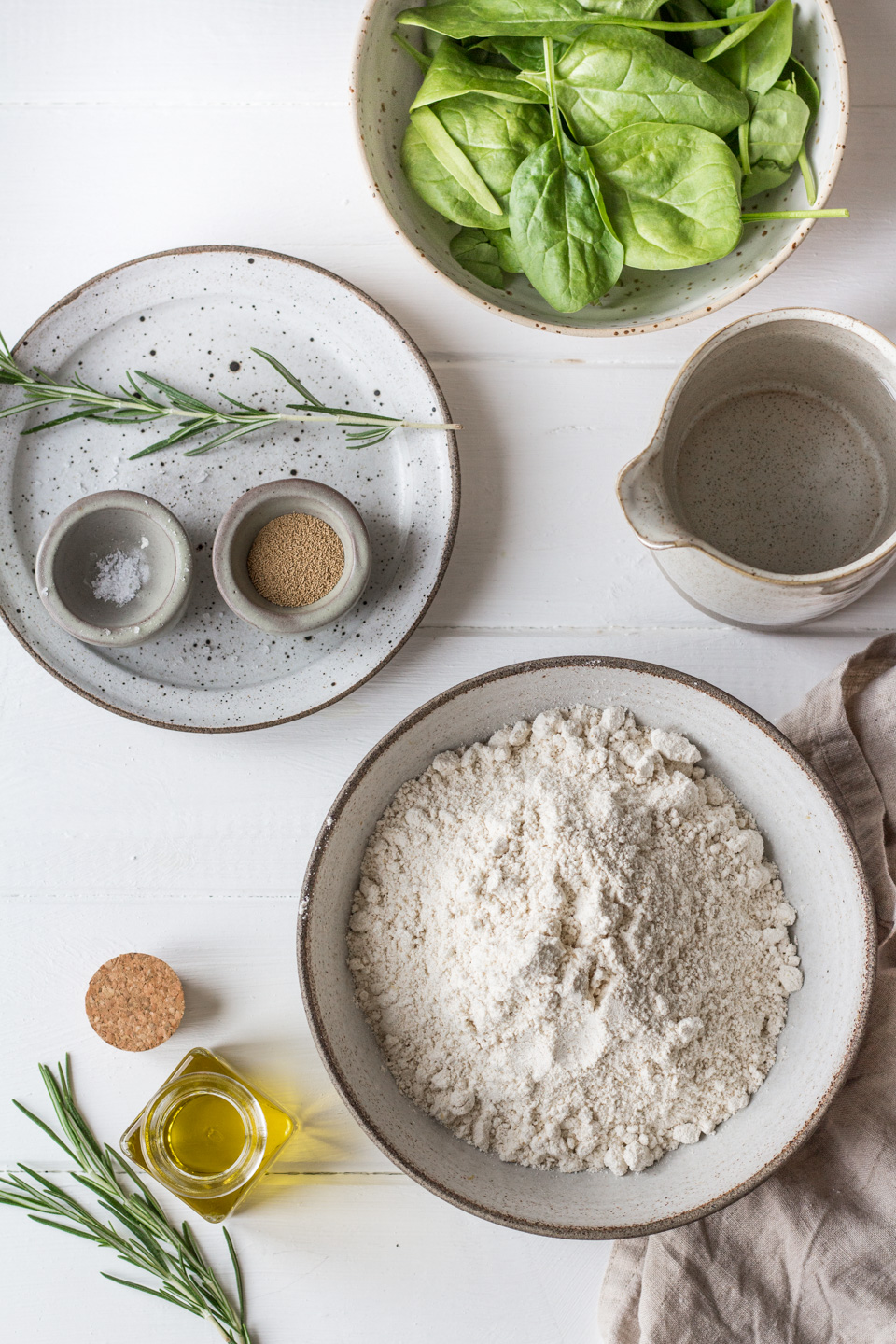
*Ad. This post is sponsored by my gluten-free friends from Alnavit.
This recipe is also available in German. / Dieses Rezept gibt es auch auf Deutsch.
Let’s talk about the elephant in the room: gluten-free baking. Ever since I started baking gluten-free bread and cakes, there have been plenty of ups and downs. At the beginning of this journey I wanted everything to be 100 % perfect, whole-grain, no white starch added. Obviously it did not take long before I realized that I needed to change my approach, and loosen up a little. Before I keep going, let me quickly explain to you why I dabble in gluten-free recipes. My sister May is a celiac, which means she has a severe form of gluten-intolerance.

It’s for her that I try to make all of the recipes on this blog gluten-free or provide gluten-free options at least. Because of her I also know how lucky I am that I do not have an intolerance, because choosing and having to live gluten-free are two completely different things. While I can easily eat gluten-containing foods while I’m on the go or on vacation, my sister cannot or else she gets really, really sick (like, literally).

So, as I said, in the beginning, I wanted my gluten-free recipes to be 100 % whole-grain. Most packaged or processed foods that are labeled gluten-free often contain nasty additives, and an insane amount of corn or potato starch, which is anything but healthy. I wanted to do things differently. And I succeeded, however, there is a fine line between a recipe being healthy and whole-grain and a recipe being … tasty. Many of you can probably relate that not all whole-grain bread, cakes, or muffins are also enjoyable. That’s when I had an epiphany, and I started to give up on wanting to be perfect, and instead, I started to combine healthy and tasty. Adding a small amount of corn or potato starch to gluten-free flour mixes really makes the outcome more fluffy, and therefore more enjoyable.

When it comes to gluten-free flour, and bread mixes, I often come back to my friends at Alnavit. I’ve been working with them for over three years now, I sometimes consult the product development team with my expertise and experience, which is why I know for sure that they are really trying to combine gluten-free and healthy in their products. A quick look into their ingredient lists reveals that their products are prioritizing promoting healthy living and well-being since the majority of them are whole-grain. To ensure a pleasurable taste, their products contain a minimal, but necessary amount of corn or potato starch. However, starch is never the first ingredient on the list, which is a great sign of quality. The order of the ingredients indicates the amount of those ingredients, from the largest to the smallest amount.

Today’s gluten-free pizza sticks are made using Alnavit’s new country-style bread mix. I’m afraid, but Alnavit is mainly sold in German-speaking countries, so it will be tricky to get it in other countries. I have provided a homemade gluten-free bread mix in the recipe below, however.
The pizza sticks were such a hit in my household, aka with my husband. When I first made them, I had 7 of them, which kind of equals a whole-pizza. But they were just too good not to eat them all. After my first attempt, I also make a version with spinach pesto to increase the number of nutrients. Both versions were super tasty, and the gluten-free dough was really easy to handle.

You can serve these at a BBQ dinner with friends, at a kid’s birthday party, or simply make them as a fun dinner instead of pizza. No matter how you choose to enjoy them, be sure to snap a picture and send it to me via social media.
Enjoy!
xx
Lynn
Print
Gluten-free & plant-based pizza sticks with sun-dried tomatoes
- Total Time: 1 hour 15 minutes
- Yield: 10-12 sticks 1x
Ingredients
For the dough:
- 250 g of gluten-free bread baking mix (see below)
- 5 g of gluten-free dry yeast
- 1 tablespoon virgin olive oil
- 175 g lukewarm water, more if necessary
- a sprinkling of sesame seeds
For the topping:
- approx. 45 g of tomato paste, more if necessary
- 1 teaspoon of oregano, dried
- 1 teaspoon of basil, dried or frozen
- 5–7 sun-dried tomatoes, drained
- 2 stems of rosemary
- 3 tablespoons of roasted pine nuts
Instructions
- Mix the gluten-free bread mix with the yeast. Add the water and olive oil and mix first with a wooden spoon, then knead briefly with your hands until it forms a smooth dough. If the dough seems too dry, add approx. 1-2 tbsp. of water and knead in (it should not be too dry, but also not too moushy, because it will be rolled out later). Place the dough in a bowl, cover with a damp cloth and leave to rise in a warm place for 30 minutes.
- In the meantime, prepare the topping. Cut the sun-dried tomatoes into small pieces, roast the pine nuts without fat in a pan until golden brown, chop the rosemary finely.
- Roll out the dough into a rectangle between two sheets of baking paper. To make sure that the individual strips of dough can be easily removed from the paper later, it helps to sprinkle the underside with a little bit of flour. To do this, remove the upper baking paper, sprinkle the surface with some rice flour (or the baking mix), place the baking paper back on top, and flip everything so that the floured surface is now at the bottom.
- Now brush the other surface with the tomato paste. Spread oregano, basil, and fresh rosemary over it. Sprinkle the dried tomatoes and pine nuts only on the bottom half of the dough. This makes it easier to fold it later.
- Preheat the oven to 200 °C top and bottom heat.
- Cut the dough from top to bottom into about 1.5 cm thick strips. Carefully fold the dough strips in half, making sure that the topping is evenly distributed.
- Lift the sticks onto a baking tray lined with baking paper and only then spiral them. Sprinkle with some sesame seeds and bake for about 15 minutes until golden brown.
Notes
- For the gluten-free bread mix, mix 1oo g of rice flour, 50 g of gluten-free oat flour, 50 g of organic potato starch, and 40 g of organic corn starch, and 10 g of psyllium husk. You’ll also need to add about 1/2 a teaspoon of salt (add more if you like).
- The gluten-free dough increases its volume only slightly, which is normal and was the case for me in all three recipe tests. You could also let it sit a little while longer if you wish.
- For a non-gluten-free version, use 250 g of white spelt flour or a mix of type whole-grain spelt flour. Depending on how much whole grain you have, you may need to use a few tablespoons more water. With light types of flour, you will generally need a little less water.
- Of course, you are completely free with the toppings. Change the herbs as you like, leave out what you don’t like and add what you love.
- The dried tomatoes have a salty taste, if you leave them out you may have to add salt to the toppings.
- Prep Time: 1 hour
- Cook Time: 15

Gluten-free & plant-based pizza sticks with spinach pesto
- Total Time: 1 hour 20 minutes
- Yield: 10-12 sticks 1x
Ingredients
For the dough:
- 250 g of gluten-free bread baking mix (see Notes)
- 5 g of gluten-free dry yeast
- 1 tablespoon virgin olive oil
- 175 g lukewarm water, more if necessary
- a sprinkling of sesame seeds
For the spinach pesto:
- 30 g of baby spinach
- 10 g of fresh basil
- 30 g cashew nuts
- 2 small cloves of garlic
- 50 ml of extra-virgin olive oil
- ½ organic lemon, the juice and some grated zest
- 1 teaspoon maple syrup or honey (honey is not vegan)
- sea or rock salt to taste
Instructions
- Mix the gluten-free bread mix with the yeast. Add the water and olive oil and mix first with a wooden spoon, then knead briefly with your hands until it forms a smooth dough. If the dough seems too dry, add approx. 1-2 tbsp. of water and knead in (it should not be too dry, but also not too moushy, because it will be rolled out later). Place the dough in a bowl, cover with a damp cloth and leave to rise in a warm place for 30 minutes.
- In the meantime, make the pesto by placing all ingredients into a food processor. Blend until a smooth pesto forms, and season with lemon juice and salt to your taste.
- Roll out the dough into a rectangle between two sheets of baking paper. To make sure that the individual strips of dough can be easily removed from the paper later, it helps to sprinkle the underside with a little bit of flour. To do this, remove the upper baking paper, sprinkle the surface with some rice flour (or the baking mix), place the baking paper back on top, and flip everything so that the floured surface is now at the bottom.
- Now brush the other surface with about half of the pesto. Use the rest for dipping or pasta, etc.
- Preheat the oven to 200 °C top and bottom heat.
- Cut the dough from top to bottom into about 1.5 cm thick strips. Carefully fold the dough strips in half.
- Lift the sticks onto a baking tray lined with baking paper and only then spiral them. Sprinkle with some sesame seeds and bake for about 15-20 minutes until golden brown (the spinach version needs a little longer than the tomato version).
Notes
- For the gluten-free bread mix, mix 1oo g of rice flour, 50 g of gluten-free oat flour, 50 g of organic potato starch, and 40 g of organic corn starch, and 10 g of psyllium husk. You’ll also need to add about 1/2 a teaspoon of salt (add more if you like).
- The gluten-free dough increases its volume only slightly, which is normal and was the case for me in all three recipe tests. You could also let it sit a little while longer if you wish.
- For a non-gluten-free version, use 250 g of white spelt flour or a mix of type whole-grain spelt flour. Depending on how much whole grain you have, you may need to use a few tablespoons more water. With light types of flour, you will generally need a little less water.
- You could also use a store-bought pesto of course.
- Prep Time: 1 hour
- Cook Time: 20



Leave a Reply